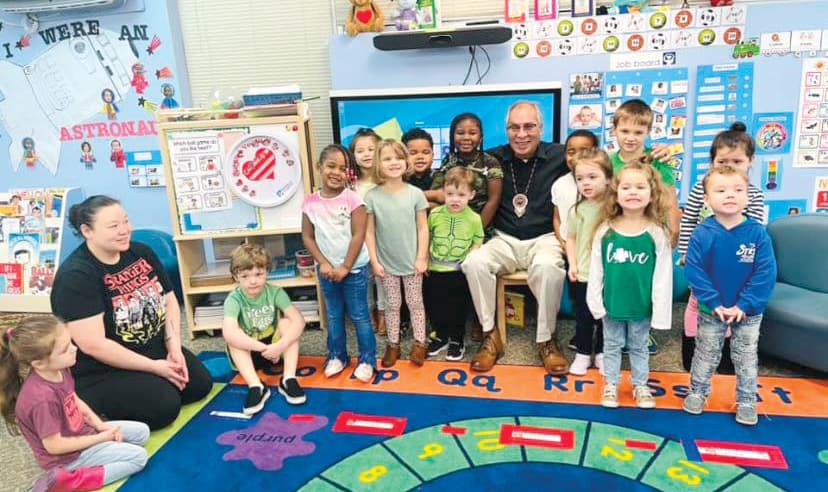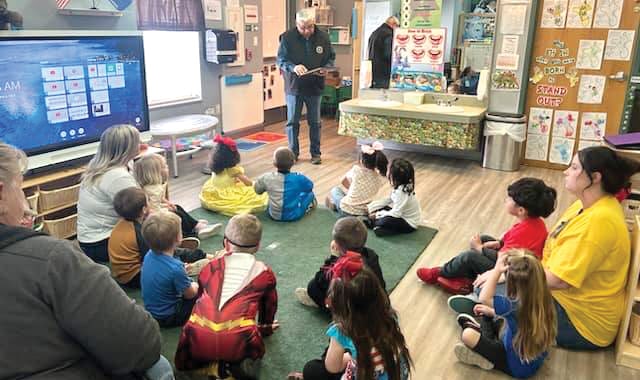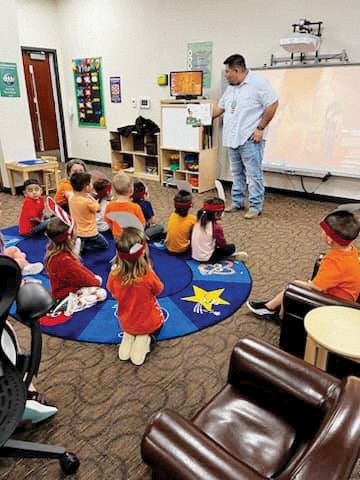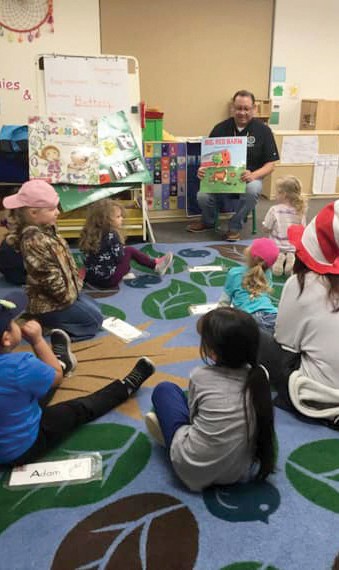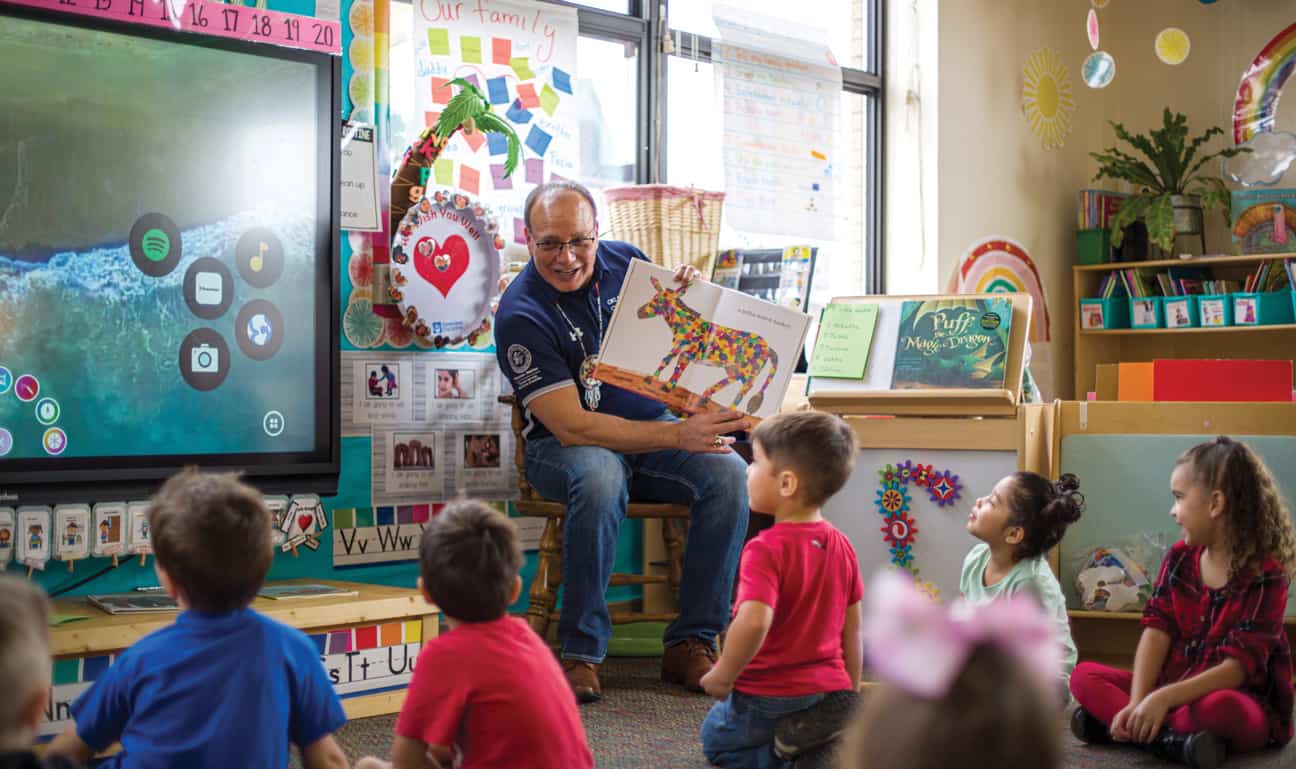
CNO celebrates Read Across America Day
Published April 3, 2023By Chris Jennings
Chief Gary Batton, Assistant Chief Jack Austin Jr., several council members and other members of tribal leadership read to kids at many of the local pre-schools and Head Start classes on March 2 as part of National Read Across America Day.
Started in 1998 by the National Education Association, Read Across America Day happens yearly, coinciding with famed children’s author Dr. Suess’s birthday.
The day is set aside to highlight the importance of reading to children at a young age.
Emily Dubler, Center Manager for the Choctaw Nation, said, “Reading is important for children because it enhances vocabulary, cognitive development, and improves general knowledge and comprehension.”
Even if a child can’t read yet, picture books can help children learn more about their surroundings, giving them a jump start on learning.
“Though they may not be able to speak just yet, books with pictures help them identify the world around them,” said Dubler.
Spending a little time reading to or reading with children gives them a jump start that becomes more important as they begin their learning journey.
“It helps them understand the world around them. No matter how young a child is, there are big benefits to reading to them,” said Dubler.
Academic benchmark tests are often done in the third grade.
Up until the third grade, children are learning to read. After that, they begin to read to learn. Without the necessary proficiency, they’re left behind or trying to catch up.
According to a report by the Annie E. Casey Foundation, a child’s reading proficiency by third grade is directly related to their success in high school. In other words, if a child could not read at a proficient level by the third grade, the likelihood that they would drop out of high school significantly increased.
The statistics for Native Americans and high school graduation are lower than average when compared to white students. In 2018-19, the graduation rates for Native Americans were 74%, compared to the U.S. average of 86%.
When Native American kids drop out of high school, they’re often unable to rise out of the generational poverty they face. The first step to stopping that generational poverty is reading to them at an early age.
“When a child is able to read, it builds their confidence and independence, which leads to their future academic success,” said Dubler.
The statistics show that these academic successes could be on the rise. According to the Institute of Education Sciences, the overall dropout rate for Native American students decreased from 15.4% in 2010 to 9.6% in 2019.
Education is one of the most important cornerstones of self-sufficiency and quality of life. It is also a crucial factor in addressing the long-term challenges Native Americans face.
A 2019 National Center for Education Statistics survey showed that a higher percentage of elementary school students participated in learning activities with their parents than in 2012.
These activities included things like arts and crafts (75% vs. 67%), board games or puzzles (74% vs. 64%), or were told a story (74% vs. 69%).
Participating in these learning activities encourages connections with the children.
“Reading to children can also build connections with the child that is being read to. Connection makes the child feel important and builds a positive relationship with the teacher,” said Dubler.
Whether the reader is a parent, family member, elder or schoolteacher, reading to a child can leave a lasting positive impact. Plus, it’s fun for everyone involved!




